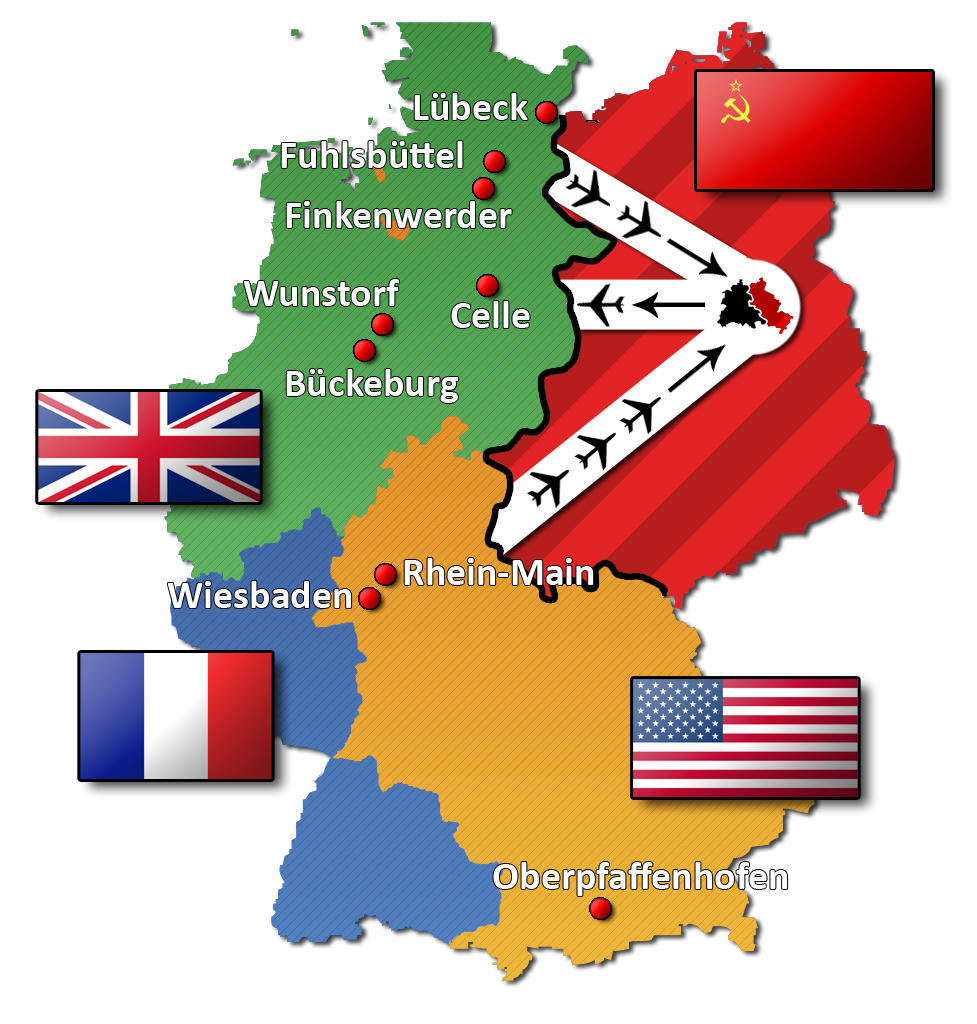The First Major Battle of The Cold War
Most people have either never heard of the Berlin Airlift or have no idea what it is and why it matters.
 |
| By Leerlaufprozess - Own work, CC BY-SA 3.0, Link |
This past weekend (June 26) marked the 73rd anniversary of the start of the Berlin Airlift when American and British aircraft dropped supplies of food, water, fuel, and other essential goods into West Berlin for 11 months.
The Allies that controlled the western section of Germany (Great Britain, France, and the U.S.) after WWII — there was no official “West German” state yet — had introduced a new currency (the Deutsche Mark) to promote economic development in the region.
In retaliation the Soviets cut off land, sea, and canal trade routes into West Berlin (the Berlin Blockade). This move created substantial pressure on the Allies to counter militarily, but President Truman decided on a humanitarian move instead.
It was the first major battle of Cold War and the scale of this 11 month operation makes that clear:
Over the next 11 months, American and British pilots ferried some 2.3 million tons of supplies into West Berlin on a total of 277,500 flights, in what would be the largest air relief operation in history. Though it began slowly, the Berlin Airlift grew more and more efficient. At its height, in the spring of 1949, an Allied aircraft landed at Berlin’s Tempelhof Airport every 45 seconds. The planes carried everything from food stuffs and medical supplies to coal and machinery, all vital to the survival of West Berliners who were hungry, scared and still reeling from the wounds inflicted during World War II. One of the airlift’s best-known heroes, U.S. pilot Gail S. Halvorsen, dropped parcels of candy, chewing gum and other sweets for the city’s children, earning the nickname “Candy Bomber.”
Berlin was the front line of the Cold War from 1948-1961: after the Berlin Airlift, the Soviets erected a series of barriers to keep East Germans from escaping to freedom, starting with the entire border between East and West Germany in 1952 and then finally the Berlin Wall in 1961. Even so, 2.5 million people escaped from 1949-1961.
The blockade and resulting airlift rescue mission resulted in two major historical Cold War developments: NATO was created, the West German state was officially established.
This entire set of events set the stage for much of what followed over the next 40 years of the Cold War; it was the starting point, with the ending point the fall of the Berlin Wall in 1989 followed soon after by the fall of the Soviet Union in 1991.
From the link above:
The crisis over Berlin in 1948-49 had cemented the division of Europe into communist and anti-communist states, and transformed the German capital, previously identified with Nazism and Hitler, into a Cold War era symbol of democracy and freedom. For West Germans, the Berlin Airlift would instill an enduring sense of gratitude toward the United States and Britain, their former enemies who had refused to allow them to be swallowed up into the communist regime, and had helped them when they needed it most.
The whole story is not just interesting and important in 20th century history, but provides missing context for much of what followed.